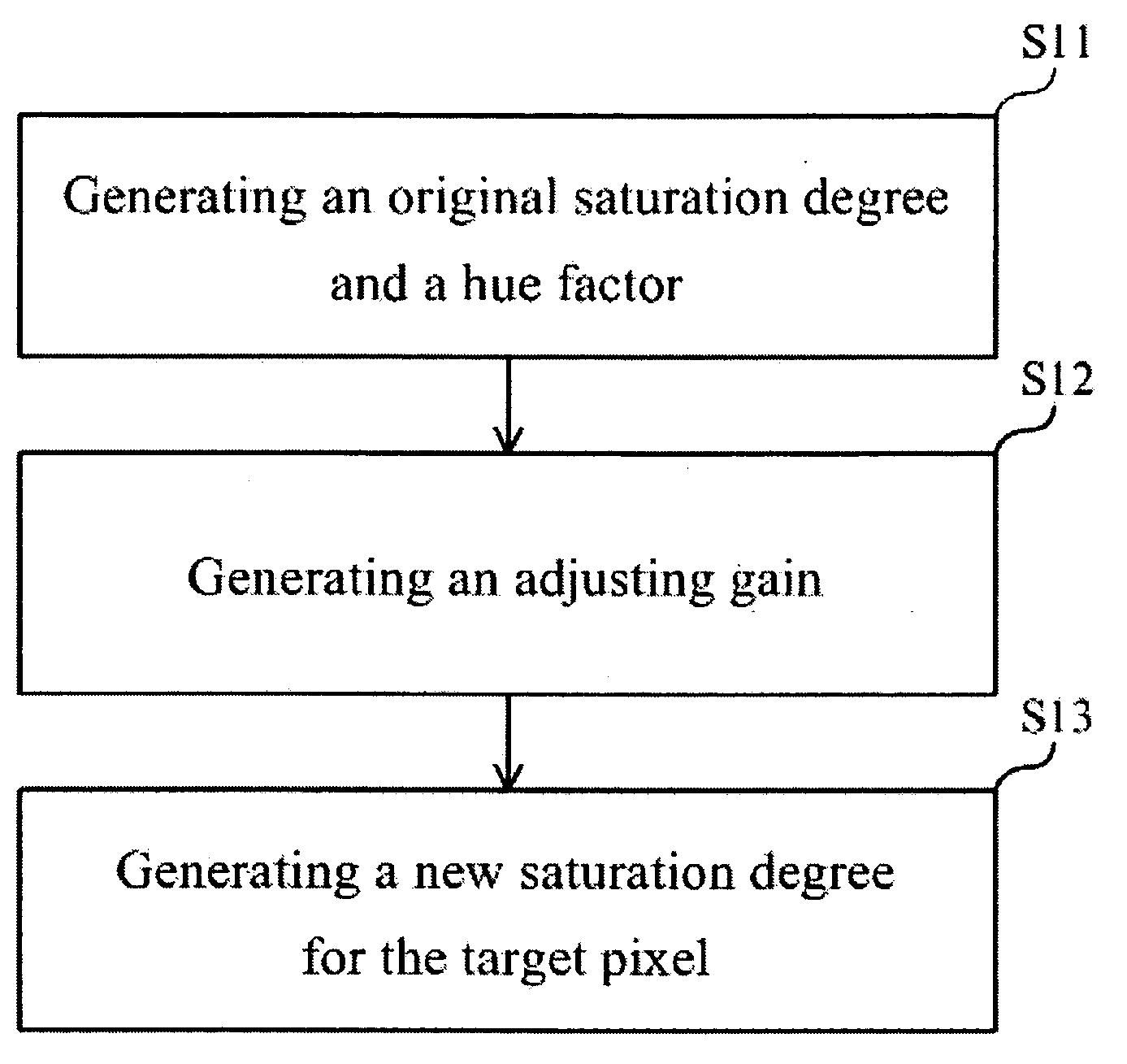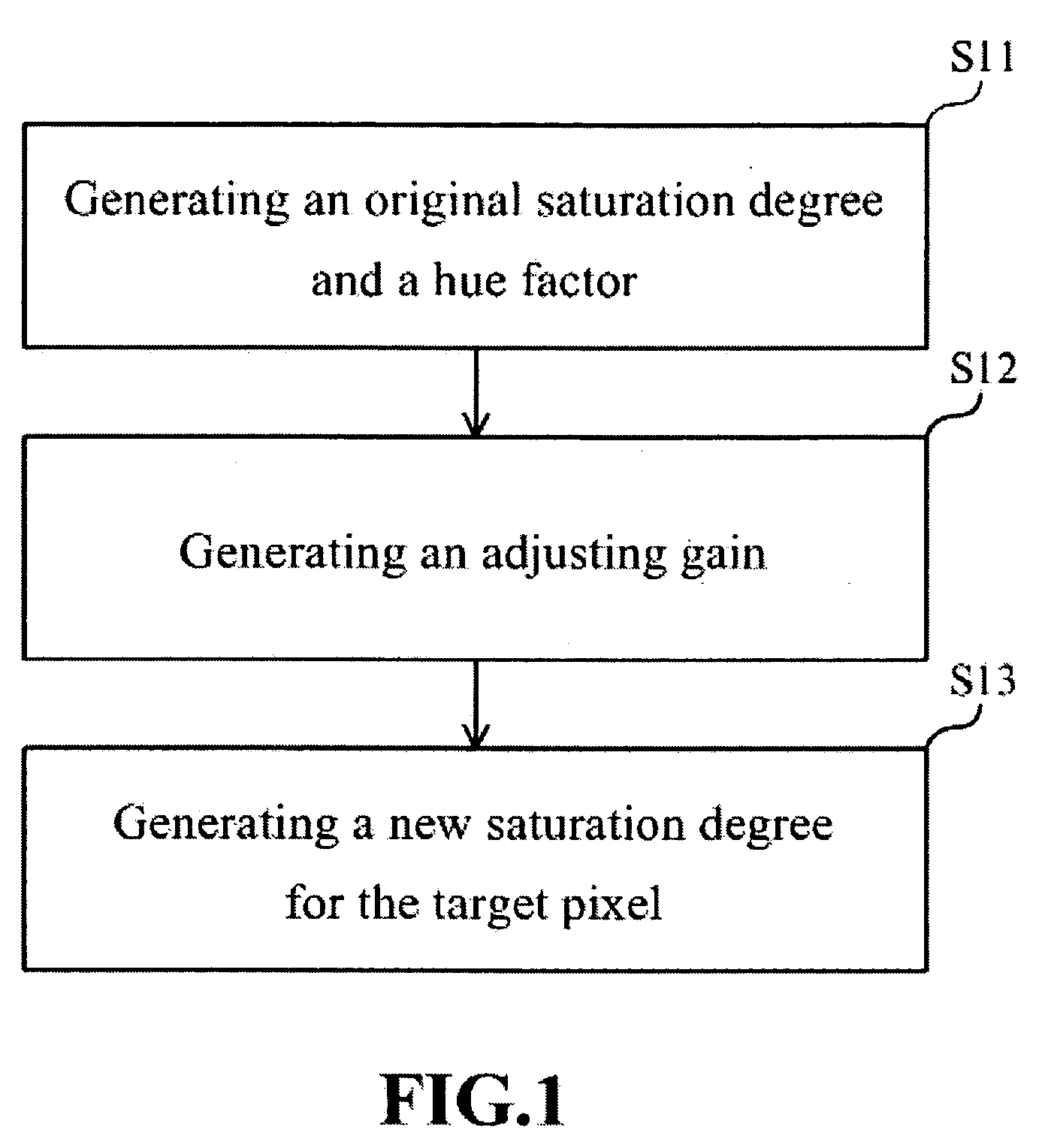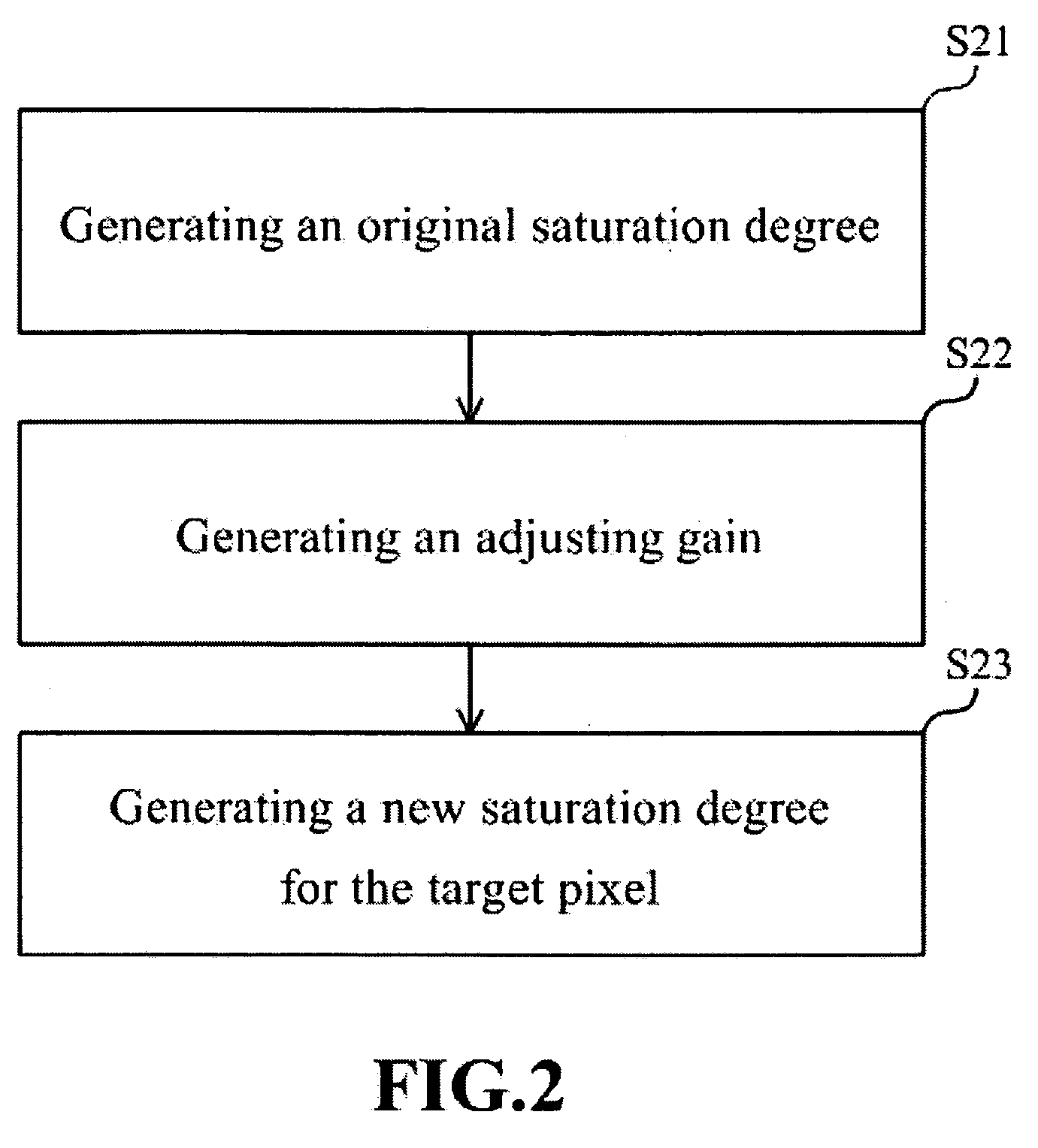Apparatus and method for adjusting saturation image
a saturation image and apparatus technology, applied in the field of image processing methods and apparatuses, can solve the problem that the adjustment of the image inevitably will not be the best, and achieve the effect of improving the image quality
- Summary
- Abstract
- Description
- Claims
- Application Information
AI Technical Summary
Benefits of technology
Problems solved by technology
Method used
Image
Examples
Embodiment Construction
[0018]The present invention provides methods and apparatuses for adjusting the saturation degree of a target pixel. In the present invention, the target pixel is hypothetically set to be represented as a brightness factor and a set of color factors in a first color space. The brightness factor and the set of color factors may be transformed from an RGB color space. The first color space can be one of the color spaces with separate brightness and color factors, such as YCbCr, YUV, and Lab color spaces.
[0019]The first preferred embodiment, according to this invention, is an image adjusting method. Please refer to FIG. 1, which illustrates the flowchart of this preferred embodiment.
[0020]First, in step S11, an original saturation degree (S) and a hue factor (H) are generated according to the set of color factors. Taking Lab color space as an example, all the colors in Lab color space respectively has a brightness factor (L), a first color factor (a), and a second color factor (b). Thus...
PUM
 Login to View More
Login to View More Abstract
Description
Claims
Application Information
 Login to View More
Login to View More - R&D
- Intellectual Property
- Life Sciences
- Materials
- Tech Scout
- Unparalleled Data Quality
- Higher Quality Content
- 60% Fewer Hallucinations
Browse by: Latest US Patents, China's latest patents, Technical Efficacy Thesaurus, Application Domain, Technology Topic, Popular Technical Reports.
© 2025 PatSnap. All rights reserved.Legal|Privacy policy|Modern Slavery Act Transparency Statement|Sitemap|About US| Contact US: help@patsnap.com



